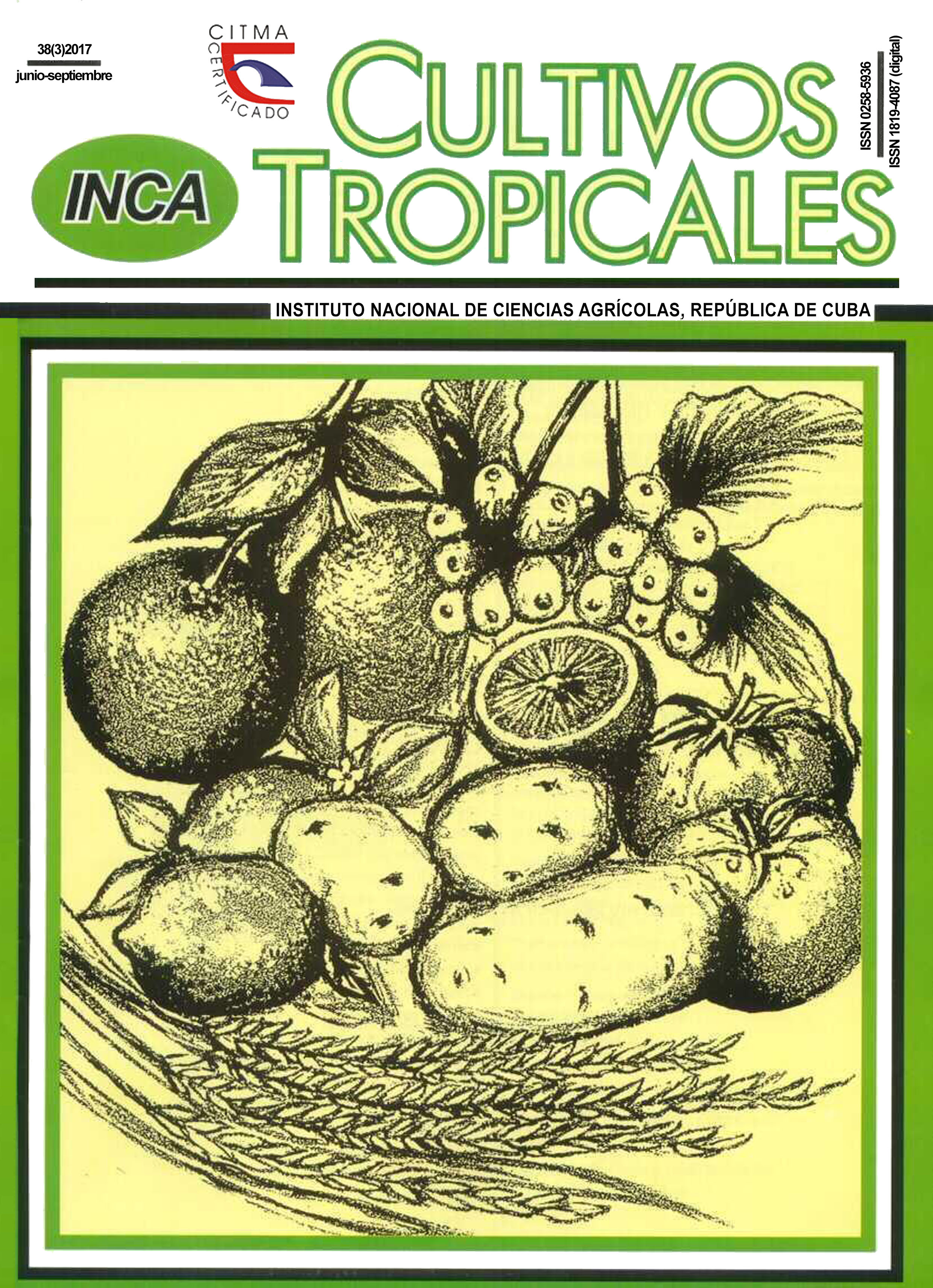Effect of chitosan salts in post-harvest quality of mango ‘Tommy Atkins’
Main Article Content
Abstract
Mango fruits have climacteric respiratory pattern and anthracnose disease affects their quality, so they have a short shelf life. Given the trends in fruit consumption without chemical residues, alternatives are sought to extend the post-harvest life, such as bioactive products. Chitin is an abundant biopolymer in the exoskeleton of crustaceans and mollusks. Chitosan have fungal properties and ability to form semi permeable films. The aim of this study was to evaluate the effect of chitosan lactate and acetate salts on post-harvest quality of mango ‘Tommy Atkins’. Fruits were submerged in chitosan salts at 15 and 20 g L-1and stored at 14 ± 1 °C for 12 days. At the storage end the incidence and severity were determined by anthracnose (%) and effectiveness of treatments, furthermore fresh mass loss (%), SST (°Brix), titratable acidity (%) and pH were determined. The incidence and severity of anthracnose decreased with the two salts, the acetate at 20 g L-1 exhibited 71,15 % effectiveness in disease control. The mass losses were greater than 5,53 % for the two salts without differences with the control. Lactate at two concentrations has a normal fruit ripening and with acetate, physiological process was delayed, evidenced in the maturity indicators and the presence of strange flavors.These results showed the potential of chitosan salts in the control of anthracnose and quality postharvest of fruits.
Article Details
Those authors who have publications with this journal accept the following terms of the License Attribution-NonCommercial 4.0 International (CC BY-NC 4.0):
You are free to:
- Share — copy and redistribute the material in any medium or format
- Adapt — remix, transform, and build upon the material
The licensor cannot revoke these freedoms as long as you follow the license terms.
Under the following terms:
- Attribution — You must give appropriate credit, provide a link to the license, and indicate if changes were made. You may do so in any reasonable manner, but not in any way that suggests the licensor endorses you or your use.
- NonCommercial — You may not use the material for commercial purposes.
- No additional restrictions — You may not apply legal terms or technological measures that legally restrict others from doing anything the license permits.
The journal is not responsible for the opinions and concepts expressed in the works, they are the sole responsibility of the authors. The Editor, with the assistance of the Editorial Committee, reserves the right to suggest or request advisable or necessary modifications. They are accepted to publish original scientific papers, research results of interest that have not been published or sent to another journal for the same purpose.
The mention of trademarks of equipment, instruments or specific materials is for identification purposes, and there is no promotional commitment in relation to them, neither by the authors nor by the publisher.
